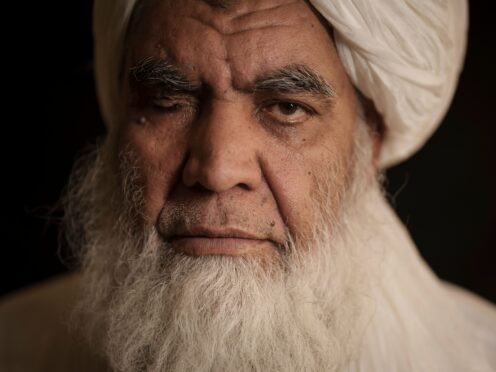One of the founders of the Taliban has said the hard-line movement will once again carry out executions and amputations of hands, though perhaps not in public.
Mullah Nooruddin Turabi dismissed outrage over the Taliban’s executions in the past, which sometimes took place in front of crowds at a stadium, and warned the world against interfering.
Mr Turabi was the chief enforcer of its harsh interpretation of Islamic law when they last ruled Afghanistan
“Everyone criticised us for the punishments in the stadium, but we have never said anything about their laws and their punishments,” he told The Associated Press, speaking in Kabul. “No one will tell us what our laws should be. We will follow Islam and we will make our laws on the Quran.”

Since the Taliban seized control of the country in August, Afghans have been watching to see whether they will recreate their harsh rule of the late 1990s. Mr Turabi’s comments suggest the group’s leaders remain entrenched in a deeply conservative, hard-line worldview, even as they embrace video and mobile phones.
In his early 60s, he was justice minister and head of the so-called Ministry of Propagation of Virtue and Prevention of Vice — effectively, the religious police — during the Taliban’s previous rule.
At that time, the world denounced the Taliban’s punishments, which took place in Kabul’s sports stadium or on the grounds of the Eid Gah mosque.
Executions of convicted murderers were usually by a single shot to the head, carried out by the victim’s family, who had the option of accepting “blood money” and allowing the culprit to live. For convicted thieves, the punishment was amputation of a hand. For those convicted of highway robbery, a hand and a foot were amputated.
Trials and convictions were rarely public and the judiciary was weighted in favour of Islamic clerics. Mr Turabi said that this time, judges — including women — would adjudicate cases, but the same punishments would be revived.
“Cutting off of hands is very necessary for security,” he said.
Taliban fighters have revived a punishment they commonly used in the past — public shaming of men accused of small-time theft.
On at least two occasions in the past week, Kabul men have been packed into the back of a pickup truck, their hands tied, and been paraded around to humiliate them.
In one case, their faces were painted to identify them as thieves. In the other, stale bread was hung from their necks or stuffed in their mouth. It wasn’t clear what their crimes were.
Wearing a white turban and a bushy, unkempt white beard, Mr Turabi limped slightly on his artificial leg. He lost a leg and one eye fighting Soviet troops in the 1980s.
Under the new Taliban government, he is in charge of prisons. He is among a number of Taliban leaders, including members of the all-male interim Cabinet, who are on a United Nations sanctions list.
During the previous Taliban rule, he was one of the group’s most ferocious and uncompromising enforcers. When the Taliban took power in 1996, one of his first acts was to scream at a woman journalist. In this week’s interview with the AP, Turabi spoke to a woman journalist.
“We are changed from the past,” he said.
He said the Taliban would allow television, mobile phones, photos and video “because this is the necessity of the people, and we are serious about it”.
Mr Turabi dismissed criticism over the previous Taliban rule, arguing that it had succeeded in bringing stability. “We had complete safety in every part of the country,” he said of the late 1990s.
Even as Kabul residents express fear over their new Taliban rulers, some acknowledge grudgingly that the capital has already become safer. Before the Taliban takeover, bands of thieves roamed the streets, and crime had driven most people off the streets after dark.
“It’s not a good thing to see these people being shamed in public, but it stops the criminals because when people see it, they think ‘I don’t want that to be me’,” said Amaan, a storeowner in the centre of Kabul. He asked to be identified by just one name.
Another shopkeeper said it was a violation of human rights but that he was also happy he can open his store after dark.
